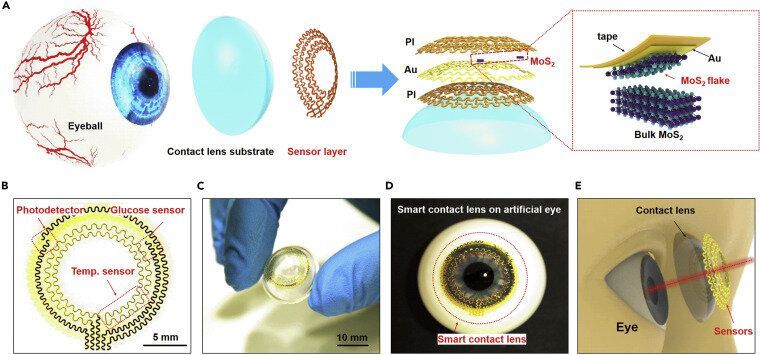Posting with Eric Klien.
My anthology of short science fiction stories is free for Kindle download until Friday.
Alien Puzzle Boxes: Twenty short science fiction stories eBook: Lichtman, Jeremy: Amazon.ca: Kindle Store.


A US company says it will have a nuclear-powered prototype vehicle on the road within two years.
Laser Power Systems from Connecticut is developing a method of propulsion that uses thorium to produce electricity to power a car engine.
Thorium is an element similar to uranium and because it is such a dense material it has the potential to produce massive amounts of heat.
According to Laser Power Systems CEO, Charles Stevens, just one gram of thorium produces more energy than 28000 litres of petrol. Mr Stevens says just eight grams of thorium would be enough to power a vehicle for its entire life.


Circa 2015
If you’ve ever scanned the comments section on an electric car or bike article, you’ll be familiar with this complaint: “that’s not green, it’s just a coal-powered vehicle.” Well, not this one. The Immortus is an electric car built to generate its own power through some 7 sq m (75 sq ft) of solar photovoltaic paneling. You can charge its battery off the mains if you have to, but if conditions are sunny, the inbuilt solar panels alone will let you drive at more than 60 km/h (37 mph) for an unlimited distance.
The Immortus is based on solar race car technology with the project originally founded by Australia’s Aurora Solar Car Team, which has competed in a bunch of solar race events across the world. Hence the light weight and the shape of the Immortus, which combines maximal sun exposure with extreme aerodynamics, including covered wheels.
Unlike the solar racers, though, it’s designed to approach practicality on the road, with a 0–100 km/h (62 mph) time that will be less than seven seconds and a top speed over 150 km/h (93 mph). It’s also a two-seater with a modest luggage capacity for daily driving. Melbourne-based EVX Ventures, creators of the Immortus, even list fun as a priority, saying it should handle like a well-balanced sports car.

NASA’s Lucy mission is one step closer to launch as L’TES, the Lucy Thermal Emission Spectrometer, has been successfully integrated on to the spacecraft.
“Having two of the three instruments integrated onto the spacecraft is an exciting milestone,” said Donya Douglas-Bradshaw, Lucy project manager from NASA’s Goddard Space Flight Center in Greenbelt, Maryland. “The L’TES team is to be commended for their true dedication and determination.”
Lucy will be the first space mission to study the Trojan asteroids, leftover building blocks of the Solar System’s outer planets orbiting the Sun at the distance of Jupiter. The mission takes its name from the fossilized human ancestor (called “Lucy” by her discoverers) whose skeleton provided unique insight into humanity’s evolution. Likewise, the Lucy mission will revolutionize our knowledge of planetary origins and the birth of our solar system more than 4 billion years ago.


The enormous impact of the recent COVID-19 pandemic, together with other diseases or chronic health risks, has significantly prompted the development and application of bioelectronics and medical devices for real-time monitoring and diagnosing health status. Among all these devices, smart contact lenses attract extensive interests due to their capability of directly monitoring physiological and ambient information. Smart contact lenses equipped with high sensitivity sensors would open the possibility of a non-invasive method to continuously detect biomarkers in tears. They could also be equipped with application-specific integrated circuit chips to further enrich their functionality to obtain, process and transmit physiological properties, manage illnesses and health risks, and finally promote health and wellbeing. Despite significant efforts, previous demonstrations still need multistep integration processes with limited detection sensitivity and mechanical biocompatibility.
Recently, researchers from the University of Surrey, National Physical Laboratory (NPL), Harvard University, University of Science and Technology of China, Zhejiang University Ningbo Research Institute, etc. have developed a multifunctional ultrathin contact lens sensor system. The sensor systems contain a photodetector for receiving optical information, imaging and vision assistance, a temperature sensor for diagnosing potential corneal disease, and a glucose sensor for monitoring glucose level directly from the tear fluid.
Dr. Yunlong Zhao, Lecturer in Energy Storage and Bioelectronics at the Advanced Technology Institute (ATI), University of Surrey and Senior Research Scientist at the UK National Physical Laboratory (NPL), who led this research stated, “These results provide not only a novel and easy-to-make method for manufacturing advanced smart contact lenses but also a novel insight of designing other multifunctional electronics for Internet of Things, human machine interface, etc.” Dr. Zhao added, “our ultrathin transistors-based serpentine mesh sensor system and fabrication strategy allow for further incorporation of other functional components, such as electrode array for electrophysiology, antennas for wireless communication, and the power modules, e.g. thin-film batteries and enzymatic biofuel cell for future in vivo exploration and practical application. Our research team at ATI, University of Surrey and NPL are currently working on these fields.”

The human eye is a surprisingly good photon detector. What can it spy of the line between the quantum and classical worlds?
I spent a lot of time in the dark in graduate school. Not just because I was learning the field of quantum optics – where we usually deal with one particle of light or photon at a time – but because my research used my own eyes as a measurement tool. I was studying how humans perceive the smallest amounts of light, and I was the first test subject every time.
I conducted these experiments in a closet-sized room on the eighth floor of the psychology department at the University of Illinois, working alongside my graduate advisor, Paul Kwiat, and psychologist Ranxiao Frances Wang. The space was equipped with special blackout curtains and a sealed door to achieve total darkness. For six years, I spent countless hours in that room, sitting in an uncomfortable chair with my head supported in a chin rest, focusing on dim, red crosshairs, and waiting for tiny flashes delivered by the most precise light source ever built for human vision research. My goal was to quantify how I (and other volunteer observers) perceived flashes of light from a few hundred photons down to just one photon.
As individual particles of light, photons belong to the world of quantum mechanics – a place that can seem totally unlike the Universe we know. Physics professors tell students with a straight face that an electron can be in two places at once (quantum superposition), or that a measurement on one photon can instantly affect another, far-away photon with no physical connection (quantum entanglement). Maybe we accept these incredible ideas so casually because we usually don’t have to integrate them into our daily existence. An electron can be in two places at once; a soccer ball cannot.

As 5G-enabled phones secured their spot as major players in smartphone technology in 2020, access to this latest functionality has been limited to higher-end phones. But things are about to change, as Qualcomm announced today the development of the Snapdragon 480 5G Mobile Platform, which is expected to usher in a new wave of low-cost smartphones featuring cutting-edge features of the latest wireless standard.
5G technology promises higher peak data speeds, very low latency and greater reliability. With the current crop of 5G-enabled phones hovering above $500, the extension of 5G to Qualcomm’s 4-series SoC could pave the way for smartphones priced in the $125-to-$250 range.
The Snapdragon 480 chipset incorporates an X51 modem that supports mmWave and below-6-GHz bandwidths, which ensures compatibility with nearly all 5G networks available today. 5G is not available everywhere, but users in regions offering the technology will see download speeds of 2.5 Gbps and upload speeds up to 660 Mbps.
